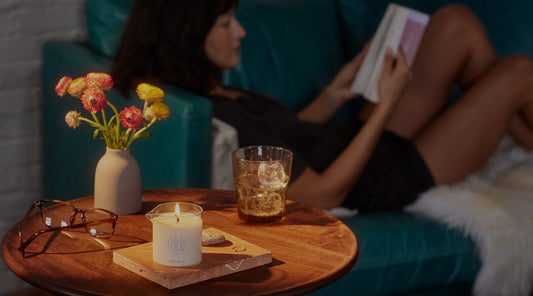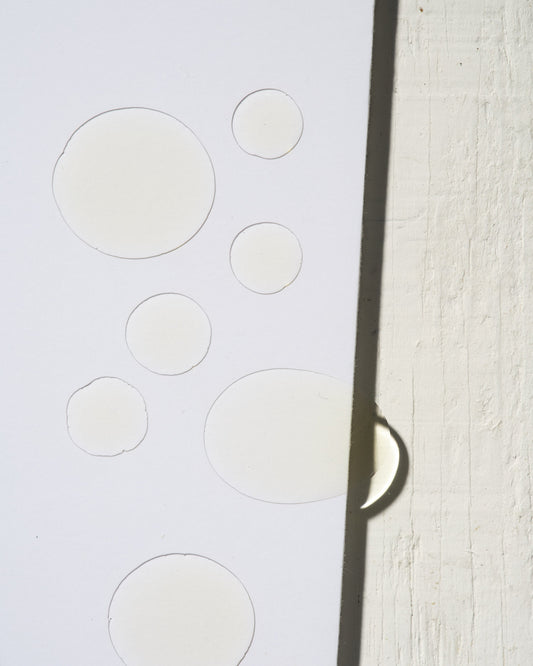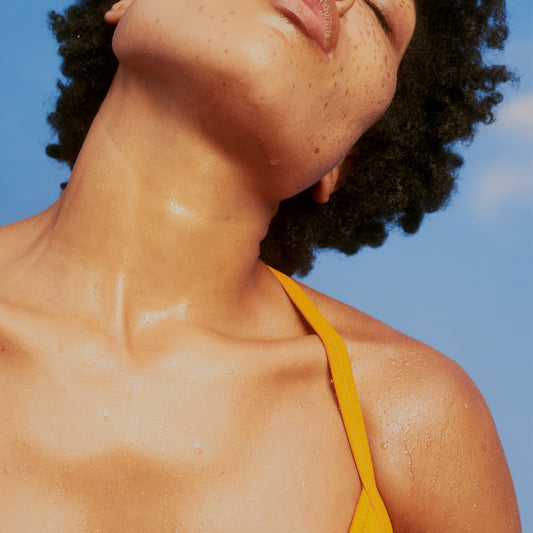Alexandra Fine, Credentialed Sexologist, M. Psych | Written by Dame
What Most People Think It Is | Is Everything In the Vulva Part of the Clitoris? | The Internal Parts of the Clitoris | What Comes Next
The title of this article may sound like either the punchline of a bad joke, or a warning sign that a sexual encounter could be less than satisfying.
In truth, it’s a question that most people, and even some doctors who specialize in gynecology, would probably answer incorrectly. (One study found that 44% of those without vulvas would score particularly poorly.)
That doesn’t mean that “where is the clitoris?” is meant to be a trick question. And you wouldn’t be completely wrong if you answered “it’s above the vagina and the urethra” or “it’s underneath the folds of the labia.” (We know you might use slang terms instead.)
Those are incomplete answers, though. Very few people, even medical professionals, realize that the clitoris is much more than the “pleasure button” that’s located near the top of the vulva.
So yes, an answer is that the clitoris is near the top of the genital area. If you have a clitoris, you probably discovered it on your own a long time ago, although you might have had to search for it under the clitoral hood. If you don’t have one, your sexual partners with vulvas will greatly appreciate your being able to find it.
But the answer – the full answer – is that the clitoris has 18 different parts, located both above and below the skin. It extends from the glans clitoris (what you might normally think of as the clitoris) well into the body. And its total length, as computed by Thomas Power Lowry in his landmark bookThe Classic Clitoris: Historic Contributions to Scientific Sexuality, is about the same as the length of a penis. As you’ll learn shortly, that shouldn’t be surprising.
So exactly where is the clitoris? Read on.
What Most People Think Is the Clitoris
That tiny button toward the top of the vulva, which is capable of generating such sexual pleasure? Most people call it the clitoris, but that’s not its real name.
It’s properly called the glans clitoris, or glans for short. It’s located at the junction of the labia majora (outer lips), near the public bone. It has no role in the female reproductive process, despite a similarity (in some ways) to the penis. It performs no crucial anatomical function, like the urethra below it. And the glans, along with the labia, are usually the most erogenous zones on the human body.
There has been a wealth of research on the subject. Studies generally conclude that clitoral stimulation most reliably leads to orgasm, and that many “vaginal” orgasms actually occur due to concurrent stimulation of the glans.
And both anecdotal and rigorous surveys repeatedly show that only about one-fifth of respondents say they can climax via vaginal penetration. More than one-third require clitoral stimulation, and another third say that clitoral stimulation in addition to penetration makes for better sexual response.
There’s a good reason why the glans is so sensitive to sexual stimulation. There are more than 8,000 nerve endings in that small “button,” even more (by a long shot) than in the tip of the penis.
And to unwrap the surprise we mentioned earlier, discussing the glans and the penis in the same paragraph makes sense. The two body parts are homologues, meaning every fetus has the same tissues to start with, but a penis develops in those with a Y chromosome, and a clitoris develops in those without a Y chromosome. Each organ develops from the same starting place. (Experts now believe that the glans also contains erectile tissue and expands during arousal, just like the penis.)
So when people speak generally about the clitoris and clitoral stimulation, they’re really talking about the glans. Let’s see what else is in the package.
Is Everything In the Vulva Part of the Clitoris?
Nope, just the glans clitoris. But the glans is protected by other parts of the vulva.
Both the outer and inner labia, or outer and inner lips as you may know them, encircle the vulva. (The “proper” terms for them are the labia majora and labia minora.) They help protect the clitoris, the urethra and the vaginal opening. During sexual excitement, they also produce some of the necessary – or at least welcome – lubrication.
Where the top portions of the labia minora fold together you’ll find the flap of skin called the clitoral hood, or prepuce. In many vulva owners the hood actually covers the glans, but during sexual arousal it can either retract or be pushed aside.
The clitoral hood (a homologue of the foreskin over the penis) is an erogenous zone of its own, and has so many nerve endings that some find it too sensitive for direct stimulation. Others feel the same way about the glans, and find it more comfortable to stimulate the hood instead.
Now, it’s time to look deeper under the hood. (Sorry about that.)
The Internal Parts of the Clitoris
The midwife of our modern understanding of the clitoris was Australian doctor Helen O’Connell.
The organ had long been considered to be nothing more than what we now know as the glans clitoris. During some periods, its importance was discounted completely; the best known naysayer was Sigmund Freud, who called clitoral arousal and orgasm “infantile and immature.” Even some 21st century studies purport to support that theory.
In the early 2000s, O’Connell and her team debunked the notion. They compared anatomy textbooks and corpses, and then confirmed their findings by studying MRIs of study participants. The end result: a true picture of the widespread and complex anatomy of the clitoris, documented in their definitive work on the subject. The findings were enriched even further by sonography research conducted by Doctors Pierre Foldès and Odile Buisson.
Here’s what they found.
The internal structures of the clitoris are wishbone-shaped. The clitoral body underneath the clitoral glans is the “top” of the wishbone; it branches out into two areas of spongy tissue each known as the corpora cavernosa, which are capped by expandable vestibular bulbs. From there the clitoris curves back in, in the form of “legs” called crura, and is eventually attached to the public bone by ligaments. The whole structure surrounds the vaginal canal.
There are several interesting reasons why those internal clitoral parts so important.
First, the corpora cavernosa, crura and bulbs of the clitoris are each composed of erectile tissue, so during arousal they fill with blood and swell. That heightens the pleasurable sensations of sexual contact while also releasing vaginal lubrication.
Second, the structure of the clitoris appears to contribute to what’s commonly called vaginal orgasm. The most tantalizing theory contends that vaginal sensations – and orgasms – are inextricably linked to the swelling of the corpora cavernosa, vestibular bulbs and crura, since they put pressure on the vaginal walls.
In fact, Foldès and Buisson believe the G-spot doesn’t even exist; it’s simply the area where the vestibular bulbs and back wall of the vagina come into contact. That would actually make a G-spot orgasm a clitoral one, and ejaculation essentially a clitoral function.
One extreme version of the theory comes from Italy’s Dr. Vincenzo Puppo, who doesn’t believe that vaginal orgasms exist. His published study claims that the clitoris, vestibular bulbs, labia, and portions of the urethra work together to produce orgasms. His study has not been peer-reviewed or generally accepted, however.
One side note: almost all of the research discusses “female genitalia,” “female sexual health,” “female sexuality,” “female sexual pleasure” and “female orgasm.” Instead of getting hung up on that, it’s easier to accept their anatomical findings and shape them to fit with modern understanding of gender identity.
What Comes Next?
That’s a lot of information. But it doesn’t just allow you to properly answer the question “where is the clitoris?” It gives you a more detailed road map to your body (and/or those of your partner(s), of course), allowing you to enjoy a more robust and satisfying sex life.
Understanding exactly what’s under – and above – the hood, and some experimentation with your favorite vibrator or sex toy (and some lube), may give you an entirely new appreciation of what you may have thought of as simply a “pleasure button.”


















































